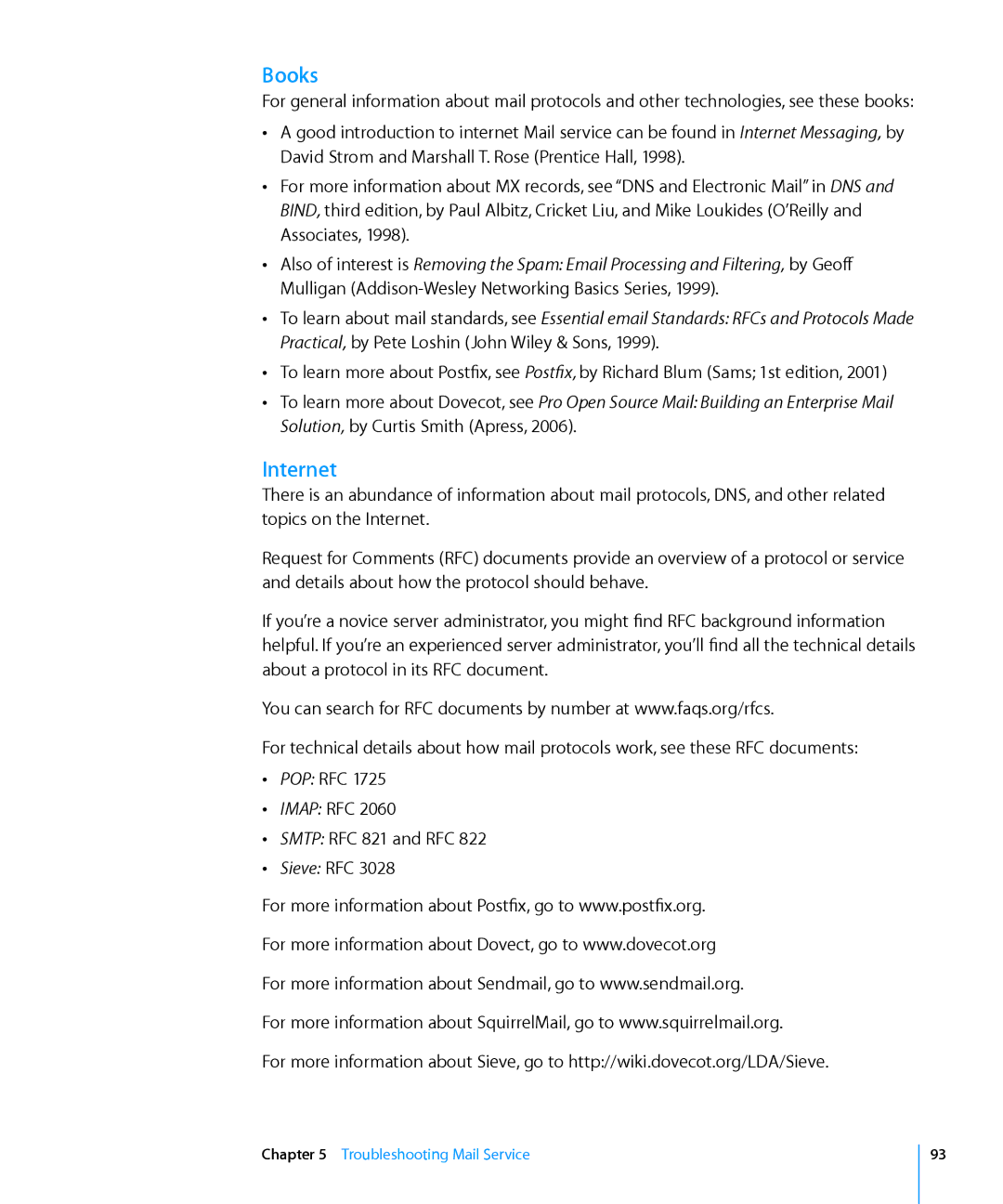Books
For general information about mail protocols and other technologies, see these books:
ÂÂ A good introduction to internet Mail service can be found in Internet Messaging, by David Strom and Marshall T. Rose (Prentice Hall, 1998).
ÂÂ For more information about MX records, see “DNS and Electronic Mail” in DNS and BIND, third edition, by Paul Albitz, Cricket Liu, and Mike Loukides (O’Reilly and Associates, 1998).
ÂÂ Also of interest is Removing the Spam: Email Processing and Filtering, by Geoff Mulligan
ÂÂ To learn about mail standards, see Essential email Standards: RFCs and Protocols Made Practical, by Pete Loshin (John Wiley & Sons, 1999).
ÂÂ To learn more about Postfix, see Postfix, by Richard Blum (Sams; 1st edition, 2001)
ÂÂ To learn more about Dovecot, see Pro Open Source Mail: Building an Enterprise Mail Solution, by Curtis Smith (Apress, 2006).
Internet
There is an abundance of information about mail protocols, DNS, and other related topics on the Internet.
Request for Comments (RFC) documents provide an overview of a protocol or service and details about how the protocol should behave.
If you’re a novice server administrator, you might find RFC background information helpful. If you’re an experienced server administrator, you’ll find all the technical details about a protocol in its RFC document.
You can search for RFC documents by number at www.faqs.org/rfcs.
For technical details about how mail protocols work, see these RFC documents: ÂÂ POP: RFC 1725
ÂÂ IMAP: RFC 2060
ÂÂ SMTP: RFC 821 and RFC 822
ÂÂ Sieve: RFC 3028
For more information about Postfix, go to www.postfix.org.
For more information about Dovect, go to www.dovecot.org
For more information about Sendmail, go to www.sendmail.org.
For more information about SquirrelMail, go to www.squirrelmail.org.
For more information about Sieve, go to http://wiki.dovecot.org/LDA/Sieve.
Chapter 5 Troubleshooting Mail Service
93
